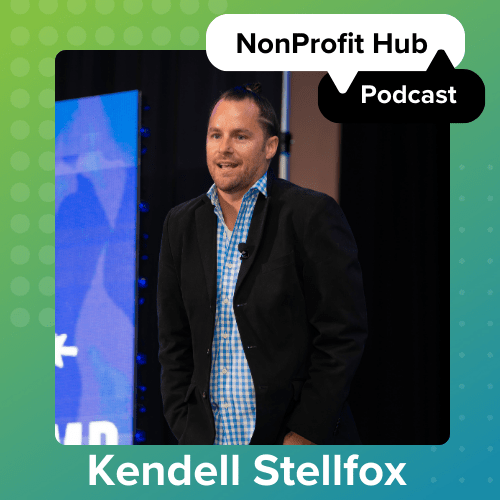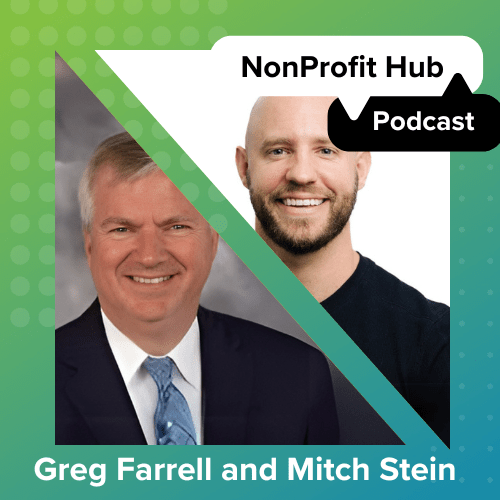Lean was made for nonprofits. Well, of course, technically, it was not.
What I mean to say is; Lean was made for nonprofits. Just in the way that jelly was made for peanut butter, it feels like common sense to pair them together. There are several key attributes inherent to the nonprofit sector culture that create a perfect “home” for practicing Lean.
People-Driven
‘Respect for People’ is one of the two main pillars of Lean. Practicing this people-first approach relies on a number of standard activities. Gemba walks help to see people in action, see their movements, their projects, their goals, their roadblocks and hear their conversations. Daily stand-ups give a voice to all team members and empower people to speak up. Continuous feedback loops allow for people to have an equal voice in their organization. Lean wants to increase connections between people. This connection allows for a greater understanding of the work, builds momentum toward the mission, builds team relationships, and enhances all communication in order to be more successful.
Connection is essential to truly practice empathy, which is the foundation of the nonprofit sector. In fact, a passionate individual creates these organizations when they involve themselves in another’s experience, and turn that mission into action. Empathy is the language of nonprofit donation requests, annual reports and case studies. The stories of those they serve are the drivers of gathering support. Additionally, nonprofits must find powerful ways to communicate the challenge in the community. Highly trusted nonprofits also give a voice to all stakeholders, including staff members and volunteers, and also show their supportive presence in the community regardless of success.
Nonprofit professionals have empathy ingrained. It is what brings most of them to work every day. With empathy driving nonprofits already, Lean will allow them to uncover their superpower and use it to its maximum potential.
Do More
A slogan within Lean is “do more with less.” Nonprofits have the “with less” part down. Resource constraint is an all too familiar problem within the sector. Nonprofit professionals often wear many hats, being the grant writer as well as the volunteer coordinator and on the marketing team, for example. The goal of Lean is not to cut resources (staff or financial) out. Lean is the means to highlight any current wasteful actions, streamline the expertise, and create an environment where nonprofits are thriving, not simply surviving.
In the practice of Lean, the most efficient method of completing any product or service is to establish a continuous flow from the beginning of the process until the end, completing the whole, rather than piecing together parts from different specializations. This allows for easy identification and reevaluation of any problems in the process. In this way, the nonprofit team members who wear many hats do have the advantage to adopt Lean thinking because they are more aware of the bigger picture of the project or service provided.
Lean, mean, problem-solving machine
Implementing the standardization and continuous flow practices of Lean will allow nonprofit professionals to maximize their time for all that they have to accomplish. Additionally, since nonprofits are distinctly in the business of solving a problem, as opposed to creating a product or regulating policies, Lean is an essential tool for all organizations in the sector. Lean can compare to the scientific method, where a problem is exposed, creating hypotheses and solutions. With a Lean approach to problem-solving, the services will improve, greatly impacting the staff member, client served, and the donor base.
Impact investing is gaining attention among grantmakers. Funders are looking for nonprofits to prove true value and evidence of impact. On top of managing the organization, soliciting donors, guiding the volunteers, and delivering the services, nonprofits must generate reports that pull out powerful data of why they need to survive. Instead of adding on a critical, time-consuming task, what if the work embedded the data? Lean provides a way of standardizing the service delivery itself as well as the administrative tasks involved and naturally brings all data to the forefront. The data guides each next step and is communicated in a powerful and clear way. The competition of resources is an intense driver within the nonprofit sector. Lean is not only a more effective way of working but is also the way to clearly astound funders with how powerful their investment will be.
Mission-driven → Values-driven
In the nonprofit context, the mission is the focal point. Nonprofits reinvest their profits towards their stated mission. The most effective mission statements are clear, moving, and apparent in every organization’s communication.
The mission should be the driver of all actions, including fundraising. However, because of resource constraints, it can be common for nonprofits to find themselves “chasing donations.” They may adapt current services to fit what they hope a funder will want to support. They may build programs or projects that are not validated or tested with their own customers or stakeholders and do not make the most long-term sense for the organization’s financial and mission-focused viability. This focus on funding first can be a dangerous rabbit hole for nonprofits. The first action in Lean is to establish clear values that will drive all organization activity. Additionally, Lean is the means of keeping a nonprofit’s values at the center of every action, rather than trying to back up funding efforts with manipulated values.
Quality over Quantity
Regardless of sector, it can be difficult to adhere to this strict practice of values first. There’s a daily temptation to find the quickest solution or the easiest financial support. It’s a mindset of “let’s just get this done and we will adjust later.” In the long run, focusing on values will have a tremendous impact on the presence and strength of a nonprofit in the community. Trust is critical for building donor relationships. A funder or donor must feel and see that a nonprofit is maintaining values first. For instance, if adhering to values is the norm for an organization, the generation of trust that results is immeasurable. In conclusion, values-first is an incredibly powerful message to anyone interested in supporting the organization. Lean is that gentle reminder, or driving force, to keep values guiding all actions.
Unique Nonprofit Attributes
One of my favorite aspects of the nonprofit sector is the variety of backgrounds from which nonprofit professionals come. I sought out a career in philanthropy. But, “falling into it” was the reason most of my colleagues found their path in nonprofits. I thought there was something so powerful in that curious attribute of the sector.
People are often driven by something unspoken, maybe even unknown to them, towards a calling. Philanthropy has a way of sparking something in people. For instance, it may be the impact of someone’s passions for a cause or it may be their natural giving spirit. The wonderful effect is that, with an inherent drive, also comes a vast array of cross-sector expertise. I’ve met entrepreneurs who started a foundation from personal experience. They let their innovative spirit guide their strategic planning. Additionally, I’ve seen a former retail management professional and a former architect aide a nonprofit development team. They gave a unique voice to the gift proposals and marketing efforts within the team, impressing prospective donors.
The many hats of nonprofits
With full consideration, there’s a lot to be said about the differences in nonprofits compared to other sectors. There’s the public and mission accountability, the sensitivity of activity, and the nature of soliciting for donations, just to start. In this article, I don’t intend to gloss over those specific characteristics of the nonprofit arena. My goal is to emphasize the power and resources nonprofits already possess and utilize to their growth advantage.
Lean is a leap. It takes courage to believe in this system, transform an organization’s culture, and challenge the status quo. However, if any sector has the capabilities to leap, it’s the nonprofit sector.
Register for our upcoming interactive session Efficiency Starts with Empathy.






